How to Install an Electric Tankless Water Heater 2024
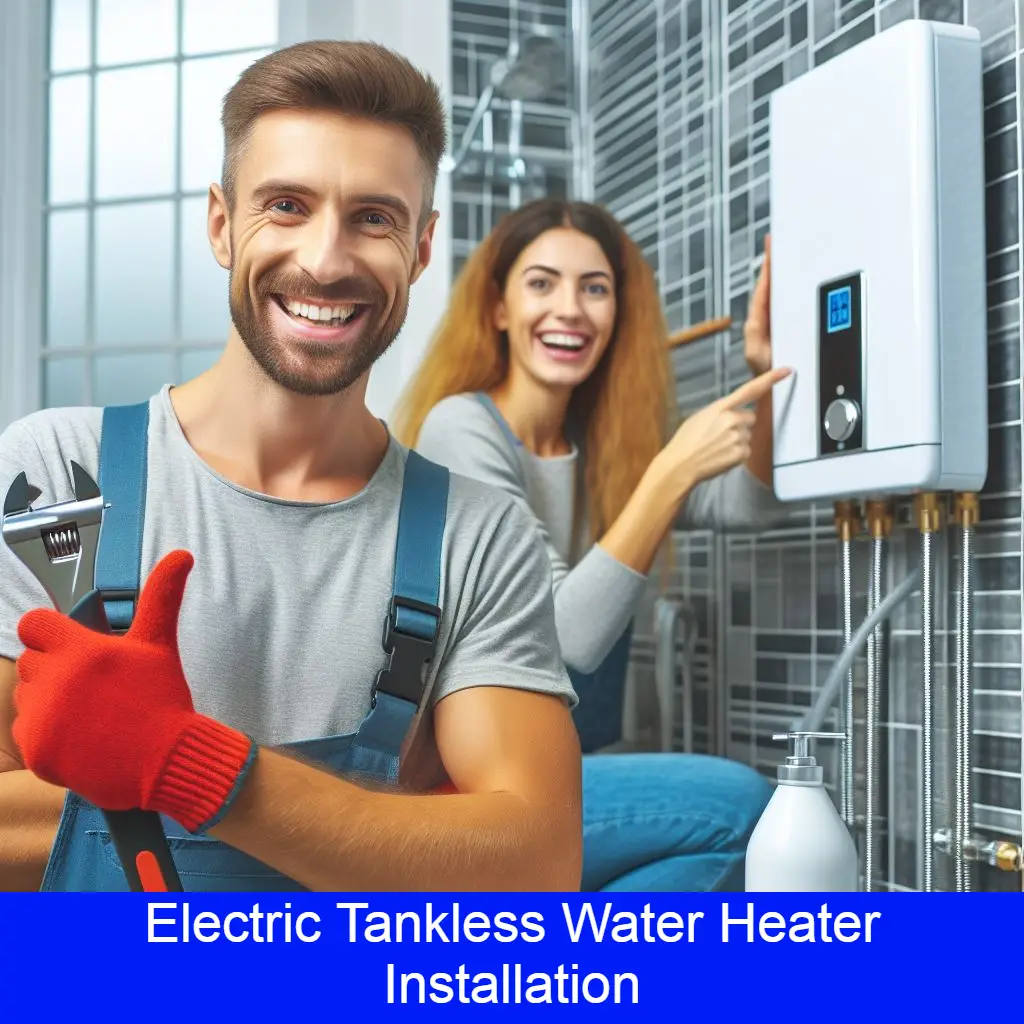
Have you ever found yourself shivering under a cold shower, cursing your traditional water heater for its limitations? Well, it’s time to break free from the shackles of the past and embrace a warmer, more efficient future. The dawn of 2024 brings with it the promise of endless hot water on demand, thanks to the marvels of electric tankless water heaters.
If you’re ready to bid farewell to the era of lukewarm frustrations, join us on a journey through the step-by-step installation process of your very own electric tankless water heater. It’s time to turn up the heat and make your daily showers a source of comfort and luxury
What is an Electric Tankless Water Heater?
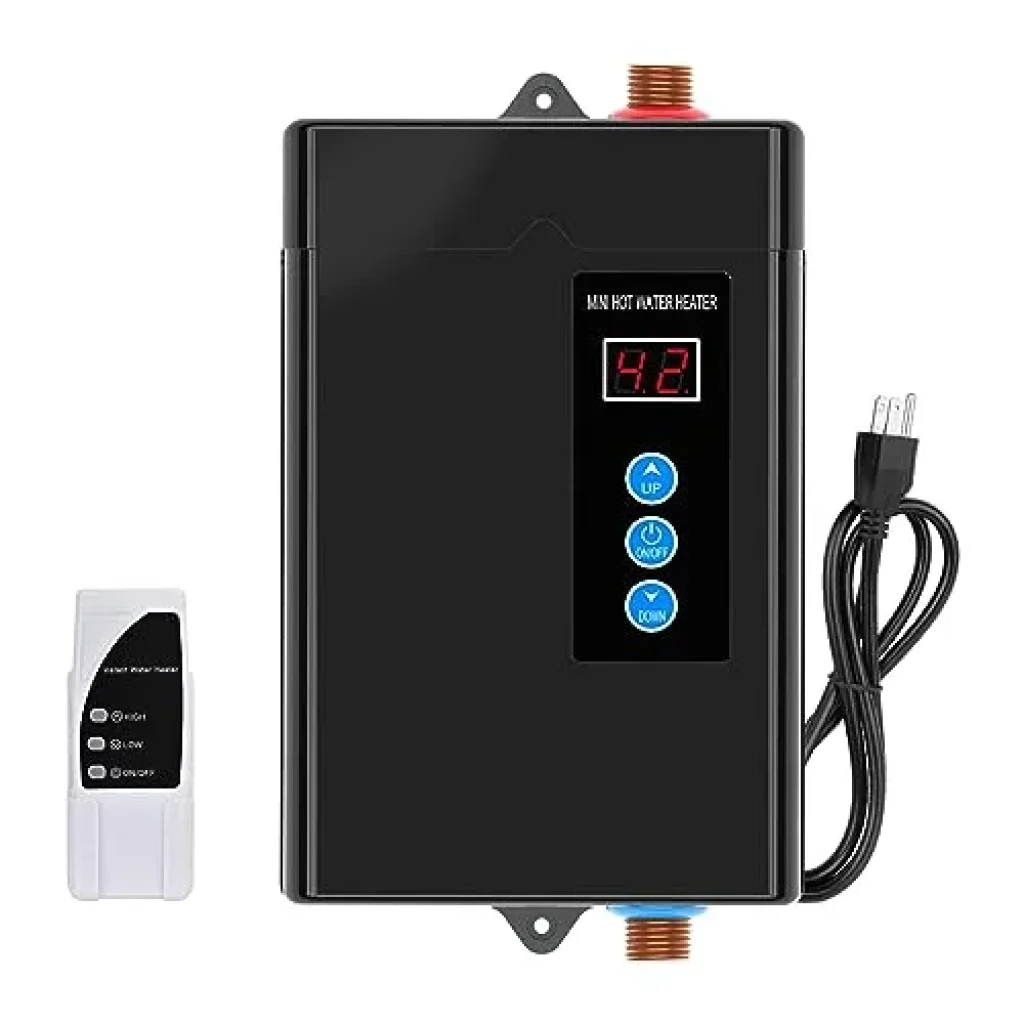
An electric tankless water heater is a device that heats water on demand without using a storage tank. It provides hot water quickly and efficiently by using electric heating elements. Unlike traditional water heaters, tankless models save energy by only heating water when needed. They are compact and suitable for smaller spaces, but it’s important to consider electrical capacity and compatibility with household hot water demands.
How Does Electric Tankless Water Heaters Work?
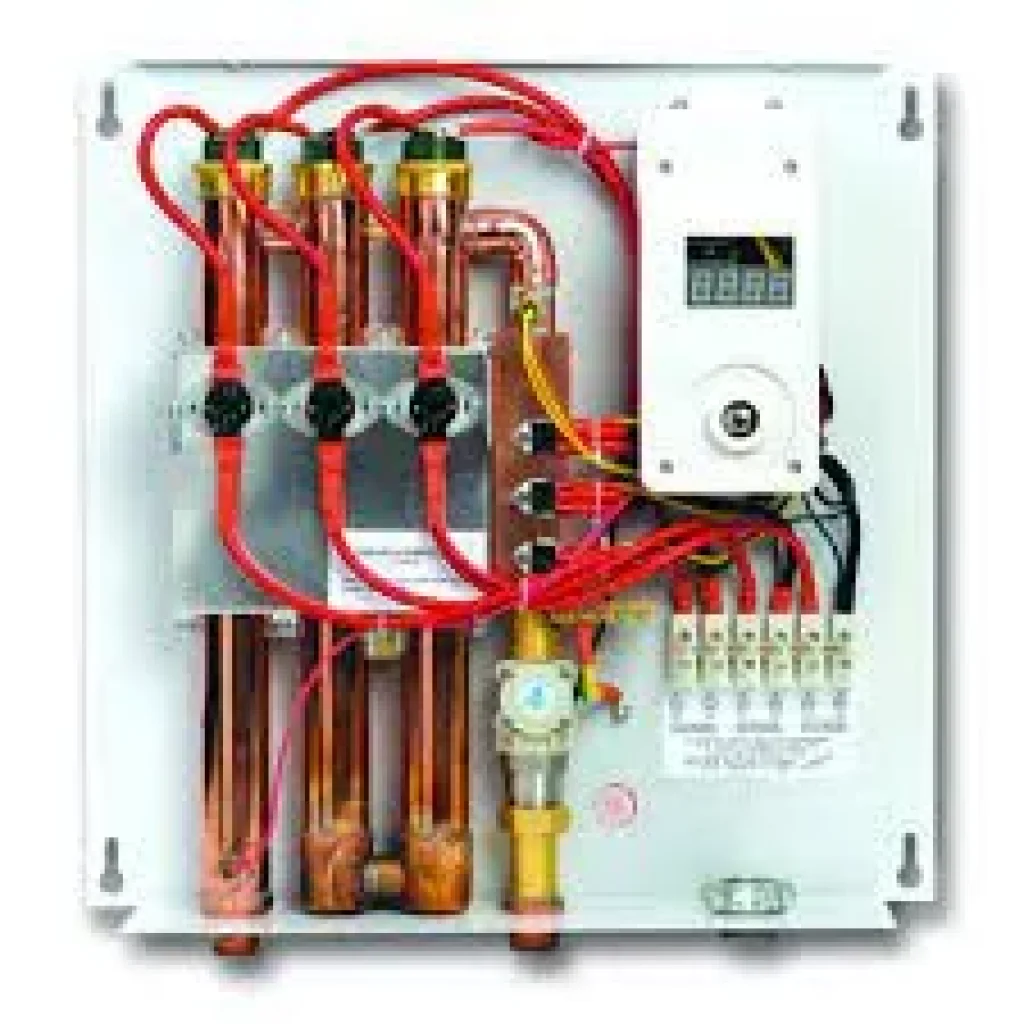
Electric tankless water heaters employ a heating element, typically referred to as a heating coil, to rapidly heat water as it passes through the unit. This design allows for on-demand hot water delivery without the need for a storage tank. The absence of a tank reduces standby heat losses, enhancing energy efficiency. Additionally, the compact nature of electric tankless water heaters makes them suitable for installations with space constraints.
How to Install Electric Tankless Water Heater

Installing an electric tankless water heater involves several steps. Ensure you have the necessary tools and follow safety guidelines. Here’s a step-by-step guide:
Tools Required:
- Pipe wrench
- Screwdrivers
- Adjustable wrench
- Pipe thread sealant
- Pipe cutter
- Tubing cutter
- Teflon tape
- Voltage tester
- Pipe fittings
- Drill with a hole saw (if venting is required)
Installation Steps:
- Choose a Location:
Select a suitable location near the main electrical panel, close to the point of use, and with proper venting if required.
- Shut Off Power:
Turn off the power at the breaker box for safety during installation.
- Disconnect Old Unit:
If replacing an existing water heater, disconnect and remove it.
- Install Water Lines:
Connect the cold and hot water lines to the unit, using appropriate fittings and ensuring proper sizing.
- Install Shut-Off Valves:
Install shut-off valves on the cold and hot water lines for maintenance and service convenience.
- Mount the Unit:
Securely mount the tankless water heater using appropriate brackets and fasteners.
- Connect Electrical Wiring:
As directed by the manufacturer, connect the electrical lines. Use a voltage tester to ensure power is off before making connections.
- Grounding:
Ensure proper grounding according to local electrical codes.
- Ventilation (if required):
If your unit requires venting, follow the manufacturer’s guidelines. This may involve drilling a hole in the wall for venting.
- Seal Connections:
Use pipe thread sealant or Teflon tape on threaded connections to prevent leaks.
- Pressure Relief Valve:
Install a pressure relief valve and pipe it to the floor drain to comply with safety regulations.
- Turn On Water and Power:
Open the shut-off valves, turn on the water supply, and restore power at the 2breaker box.
- Check for Leaks:
Inspect all connections for leaks. Tighten fittings if necessary.
- Set Temperature:
Adjust the temperature setting on the unit according to your preferences.
- Flush the System:
Flush the unit to remove any air or debris.
- Test the Unit:
Turn on the hot water taps to test the unit. Ensure hot water is consistently delivered.
Always refer to the specific manufacturer’s instructions provided with your tankless water heater and adhere to local building codes. If you’re unsure or uncomfortable with any step, consider hiring a professional plumber or electrician for installation.
GET TOP RATED ELECTRIC TANKLESS WATER HEATER HERE!
Gas Water Heater Vs Electric Tankless Water Heater
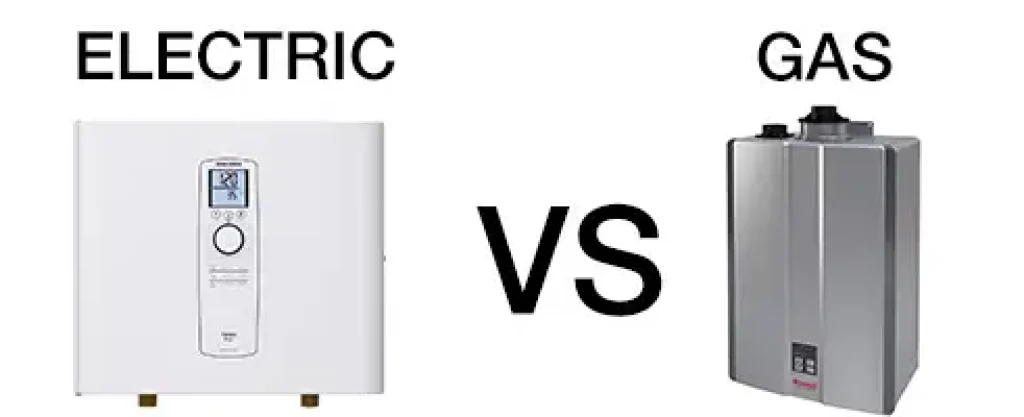
Gas water heaters use natural gas or propane, have lower upfront costs, and provide a continuous hot water supply from a storage tank. Electric tankless water heaters use electricity, offer energy efficiency with no standby heat loss, and provide hot water on demand without a storage tank. The choice depends on factors like energy costs, space, and preferences.
GET THE BEST TAN/TANKLESS WATER HEATERS HERE!
Electric Tankless Water Heater Vs Tank Water Heater
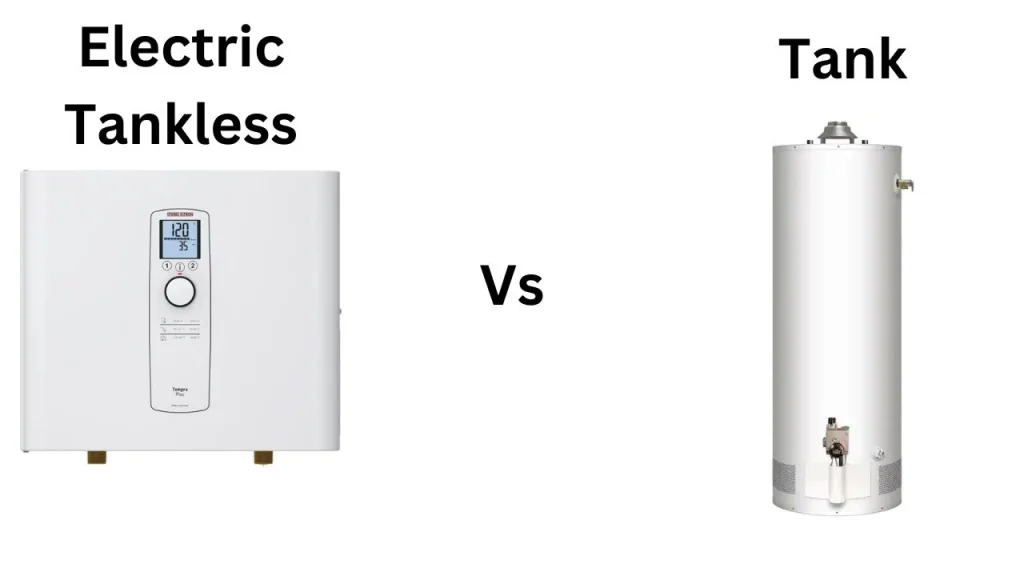
When comparing electric tankless water heaters to traditional tank water heaters, several factors come into play. Electric tankless heaters provide hot water on demand, eliminating the need for a storage tank and reducing standby heat losses, making them more energy-efficient. They are also typically more compact, saving space in your home.
However, the upfront installation costs can be higher, and their ability to deliver hot water simultaneously to multiple outlets may be limited. Traditional tank water heaters, on the other hand, have a lower initial cost, but they continuously maintain a reservoir of hot water, resulting in standby energy losses. They are suitable for simultaneous hot water use but may run out of hot water during periods of high demand. The choice between the two depends on your household’s hot water needs, available space, and budget considerations.
Electric Tankless Water Heater vs Hybrid Tankless Water Heater
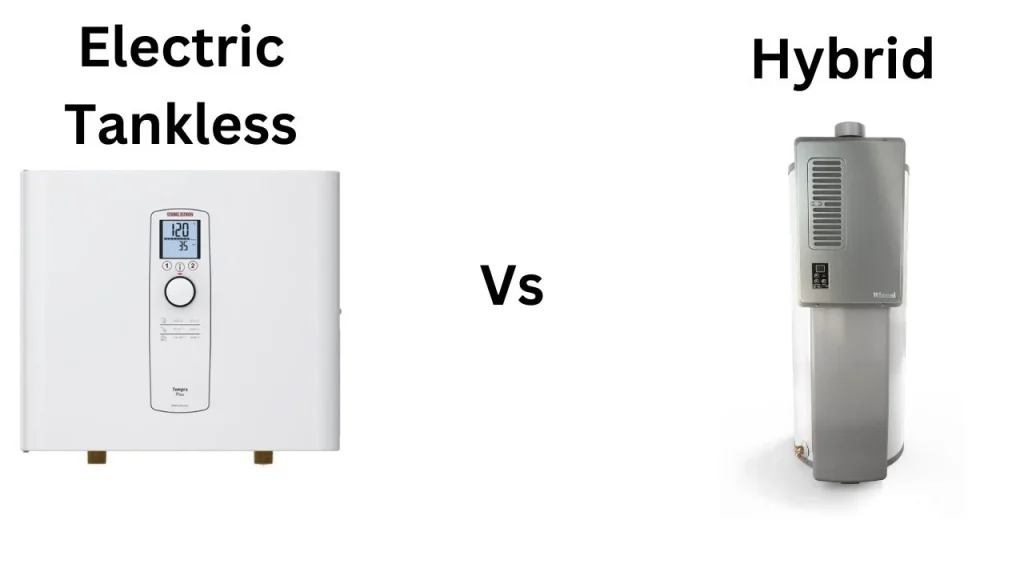
Electric tankless water heaters use electricity for on-demand hot water with a compact design. Hybrid tankless water heaters combine a heat pump with electric elements for energy efficiency, but installation can be more complex. Choose based on preferences, space, and efficiency needs.
Efficiency Comparison of Hybrid, Gas, And Electric Tankless Water Heater
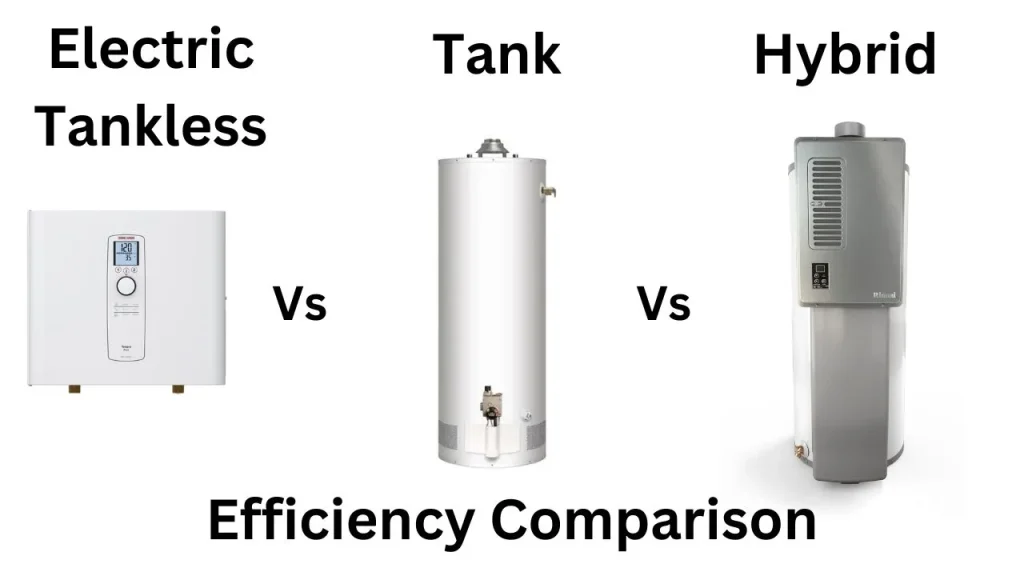
Efficiency comparisons among hybrid, gas, and electric tankless water heaters can vary based on factors such as energy source, climate, and usage patterns. Here’s a concise overview:
- Hybrid Tankless Water Heater:
Pros: Highly efficient, especially in warmer climates where the heat pump can draw heat from the air. Can provide significant energy savings.
Cons: Typically more expensive upfront, and installation can be more complex.
- Gas Tankless Water Heater:
Pros: Efficient and cost-effective, especially in regions with lower natural gas prices. Provides a continuous supply of hot water.
Cons: Requires a gas line and proper ventilation. May have standby energy losses.
- Electric Tankless Water Heater:
Pros: Energy-efficient due to on-demand heating and no standby heat loss. Compact design saves space.
Cons: Operating costs can be higher depending on electricity rates. May require significant electrical capacity.
Considerations:
- Climate: Hybrid systems may be more efficient in warmer climates, while gas systems are generally effective in various climates.
- Costs: Upfront costs, energy prices, and installation expenses contribute to the overall efficiency equation.
- Usage Patterns: High hot water demand may favor gas systems, while smaller households with intermittent usage may benefit from electric or hybrid options.
Ultimately, the most efficient choice depends on your specific circumstances, preferences, and local energy costs. Consider consulting with a professional to determine the best fit for your needs.
Here is a table below that compares the efficiencies of different types of tankless water heaters.
| Hybrid | Tankless | Tank | |
| Fuel | natural gas | natural gas | natural gas |
| Material | cast iron | copper | cast iron |
| Efficiency | average 86% | average 80% | average 60% |
| Nitrous oxide emissions (PPM) | 5–30 | 30–40 | 60–90 |
| Carbon monoxide emissions (PPM) | 40–45 | 190–200 | 200–250 |
| Exhaust temp. | 53–68 °C (128–155 °F) | 199–210 °C (390–410 °F) | 249–260 °C (480–500 °F) |
Electric Tankless Water Heater Maintenance Tips

Maintaining an electric tankless water heater is crucial to ensure its optimal performance and longevity. Here are some tips to help you with the maintenance:
- Annual Flush:
Flush the system yearly to remove sediment and mineral deposits.
- Check for Leaks:
Regularly inspect for leaks and promptly address any issues.
- Ventilation Maintenance:
Ensure proper ventilation by keeping the system clear of debris.
- Air Filter:
By the manufacturer’s guidelines, clean or replace the air filter.
- Monitor Water Pressure:
Maintain water pressure within the recommended range.
- Electrical Connections:
Inspect wiring for wear or damage; address issues promptly.
- Inlet Filter:
Clean or replace the inlet water filter as advised by the manufacturer.
- Pressure Relief Valve:
Test the pressure relief valve annually to ensure proper functionality.
- Temperature Settings:
Verify temperature settings and thermostat operation.
- Professional Inspections:
Schedule periodic inspections by a qualified technician.
Always consult your unit’s manual for specific guidelines, and seek professional assistance if unsure about any maintenance tasks.
Mastering Electric Tankless Water Heater Installation in 2024
In 2024, installing an electric tankless water heater promises a future of endless hot water on demand, combining efficiency and luxury. Comparing options, gas water heaters offer reliability, electric tankless heaters save space and energy, while hybrid systems excel in efficiency, especially in warmer climates. The choice depends on factors like energy costs, space, and personal preferences. As we navigate evolving water heating technology, the goal is clear: transform daily showers into a source of comfort and luxury, embracing a warmer and more energy-conscious future.







